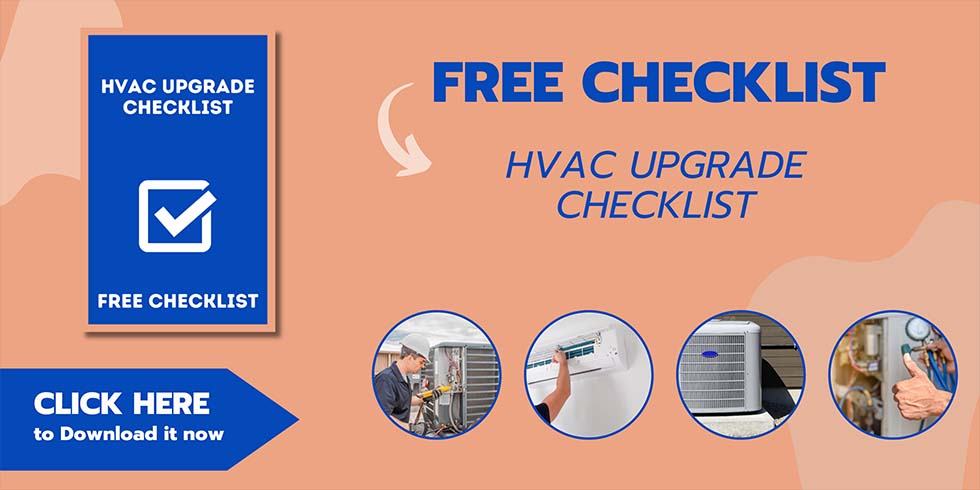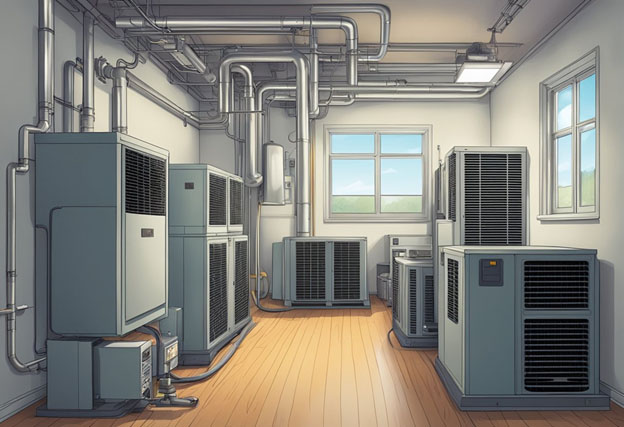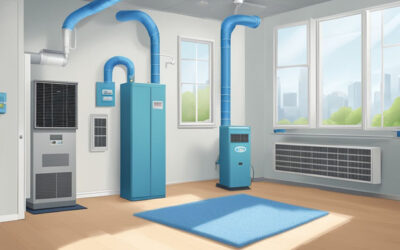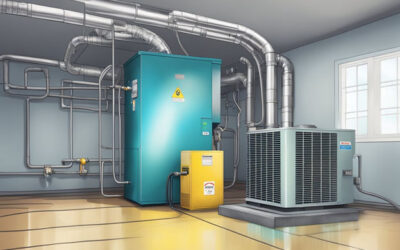Oversized HVAC systems are becoming increasingly popular in modern buildings. Many people believe that bigger is always better, but when it comes to HVAC systems, this is not necessarily the case. In fact, oversized HVAC systems can be dangerous and costly in the long run. This article will explore the dangers of oversized HVAC systems and explain why bigger is not always better.
One of the main dangers of oversized HVAC systems is that they can cause indoor air quality problems. When an HVAC system is too large for a building, it will cycle on and off more frequently than it should. This can cause the system to not run long enough to remove humidity from the air, which can lead to mold growth. Additionally, oversized HVAC systems can create temperature imbalances throughout a building, which can make some areas too hot and others too cold.
Another danger of oversized HVAC systems is that they can be costly to operate and maintain. An oversized HVAC system will consume more energy than a properly sized system, which will result in higher utility bills. Additionally, oversized systems may require more frequent repairs and replacements, which can be expensive in the long run. Overall, it is important to carefully consider the size of an HVAC system before installing one in a building.
Understanding HVAC System Sizing
Proper sizing of an HVAC system is crucial to ensure optimal performance and energy efficiency. Oversized HVAC systems may seem like a good idea, but they can lead to a host of problems, including increased energy consumption, decreased comfort, and premature equipment failure.
HVAC system sizing is determined by a variety of factors, including the size and layout of the building, the number of occupants, and the local climate. A properly sized system will provide adequate heating and cooling while minimizing energy consumption and operating costs.
One common mistake is oversizing the system to compensate for poor insulation or air leakage. While this may provide temporary relief, it will ultimately lead to higher energy bills and decreased comfort. In fact, oversized systems may cycle on and off more frequently, leading to increased wear and tear on the equipment and decreased overall lifespan.
On the other hand, undersized systems may struggle to maintain a comfortable temperature, leading to increased energy consumption as the system works harder to compensate. This can also lead to increased wear and tear on the equipment, as well as decreased indoor air quality.
To properly size an HVAC system, it is important to work with a qualified professional who can conduct a thorough analysis of the building and its occupants. This may include a load calculation, which takes into account factors such as insulation, air leakage, and local climate to determine the appropriate size for the system.
In summary, proper HVAC system sizing is crucial to ensure optimal performance and energy efficiency. Oversized systems may seem like a good idea, but they can lead to a host of problems, including increased energy consumption, decreased comfort, and premature equipment failure. Work with a qualified professional to determine the appropriate size for your building and its occupants.
The Pitfalls of Oversized HVAC Systems
When it comes to HVAC systems, bigger isn’t always better. Oversized HVAC systems can lead to a variety of issues that can impact the comfort, energy efficiency, and even the health of building occupants.
One major issue with oversized HVAC systems is that they can lead to short cycling. This is when the system turns on and off frequently, which can cause wear and tear on the equipment and increase energy consumption. Short cycling can also lead to inconsistent temperatures and poor indoor air quality.
Another problem with oversized HVAC systems is that they can’t effectively remove humidity from the air. This can lead to a muggy and uncomfortable indoor environment, as well as mold growth and other indoor air quality issues.
In addition, oversized HVAC systems can be more expensive to install and maintain, as well as less energy efficient overall. This can lead to higher operating costs and a larger carbon footprint.
Overall, it’s important to carefully size HVAC systems to meet the specific needs of a building. Oversizing can lead to a variety of issues that can impact comfort, energy efficiency, and indoor air quality.
Economic Implications of Oversized HVAC
Oversized HVAC systems can result in significant economic implications for building owners and operators. While it may seem like a bigger system would be more effective at heating and cooling a space, the reality is that oversized systems can actually lead to higher energy bills and maintenance costs.
One of the primary economic implications of oversized HVAC systems is increased energy consumption. When an HVAC system is too large for a space, it will cycle on and off more frequently, which can lead to wasted energy. This is because HVAC systems use the most energy when they first turn on, and the more frequently they cycle on and off, the more energy they waste.
In addition to increased energy consumption, oversized HVAC systems can also lead to higher maintenance costs. This is because the system will experience more wear and tear due to the increased cycling, which can lead to more frequent breakdowns and repairs. This can be especially problematic for building owners and operators who are trying to keep their maintenance costs under control.
Another economic implication of oversized HVAC systems is reduced equipment lifespan. When an HVAC system is constantly cycling on and off, it will experience more wear and tear, which can lead to a shorter lifespan. This means that building owners and operators will need to replace their HVAC systems more frequently, which can be a significant expense.
Overall, it’s clear that oversized HVAC systems can have significant economic implications for building owners and operators. By choosing a properly sized system, building owners and operators can save money on energy bills, maintenance costs, and equipment replacement costs over the long term.
Environmental Concerns
Oversized HVAC systems not only waste energy and money, but they also have negative impacts on the environment. The excessive energy consumption of these systems leads to increased carbon emissions, contributing to climate change. Moreover, the production and disposal of oversized HVAC systems also have environmental costs.
The manufacturing of oversized HVAC systems requires more materials and energy, resulting in higher carbon emissions during the production process. Additionally, the disposal of these systems can lead to environmental problems as they take up more space in landfills and require more energy to dispose of.
Furthermore, oversized HVAC systems can also have indirect environmental impacts. For example, they may lead to increased demand for electricity, which could result in more fossil fuel consumption and emissions from power plants. Additionally, the excess heat generated by oversized systems can affect local microclimates, leading to changes in temperature and humidity levels that may have negative impacts on local ecosystems.
In summary, oversized HVAC systems have significant environmental impacts, including increased carbon emissions, resource consumption, and waste generation. It is important to consider the environmental costs of these systems when choosing the appropriate HVAC system for a building.
Choosing the Right HVAC Size
When it comes to selecting the right HVAC system, size matters. Choosing the wrong size can lead to inefficiency, increased energy bills, and potential system failure. Therefore, it is essential to choose the right size HVAC system to meet your needs.
The first step in selecting the right size HVAC system is to determine the heating and cooling load of your home or building. This calculation takes into account factors such as the size of the space, the number of occupants, the level of insulation, and the climate in your area.
Once the heating and cooling load is determined, it is important to select an HVAC system that is appropriately sized for your needs. An oversized HVAC system will cycle on and off frequently, leading to increased wear and tear on the system and decreased efficiency. On the other hand, an undersized HVAC system will struggle to keep up with demand, leading to increased energy bills and potential system failure.
To ensure that you choose the right size HVAC system, it is recommended to consult with a professional HVAC contractor. They can perform a load calculation and recommend the appropriate size system for your needs. Additionally, they can ensure that the system is installed correctly and provide ongoing maintenance to ensure optimal performance.
In summary, choosing the right size HVAC system is crucial for optimal performance and efficiency. By consulting with a professional HVAC contractor and performing a load calculation, you can ensure that you select the appropriate size system for your needs.
Best Practices for HVAC Installation
When it comes to installing an HVAC system, there are several best practices to consider to ensure optimal performance and energy efficiency. Here are some key factors to keep in mind:
Proper Sizing
As mentioned earlier, oversized HVAC systems can lead to a range of issues, including increased energy consumption, poor indoor air quality, and reduced comfort. To avoid these problems, it’s essential to properly size the system based on the specific needs of the building. A professional HVAC contractor can perform a load calculation to determine the appropriate size and capacity of the system.
Quality Installation
Proper installation is critical to the long-term performance and efficiency of an HVAC system. A qualified contractor should follow industry standards and guidelines to ensure that all components are installed correctly. This includes proper ductwork design and installation, as well as adequate insulation and sealing to prevent air leaks.
Regular Maintenance
Regular maintenance is essential to keep an HVAC system running smoothly and efficiently. This includes tasks such as changing air filters, cleaning coils, and inspecting components for wear and tear. A maintenance schedule should be established and followed to ensure that the system is operating at peak efficiency and to prevent potential problems before they occur.
Energy Efficiency
Energy efficiency should be a top priority when installing an HVAC system. Choosing high-efficiency equipment, such as Energy Star certified models, can significantly reduce energy consumption and lower operating costs. Other factors to consider include programmable thermostats, zoning systems, and proper insulation to minimize heat loss and gain.
By following these best practices, building owners can ensure that their HVAC systems are properly sized, installed, and maintained for optimal performance and energy efficiency.
Advancements in HVAC Technology
As technology continues to advance, HVAC systems have become more efficient, quieter, and environmentally friendly. One of the major advancements in HVAC technology is the use of variable speed motors in air handlers and compressors. These motors can adjust the speed of the fan or compressor based on the demand for heating or cooling, resulting in significant energy savings.
Another advancement is the use of smart thermostats that can be controlled remotely through a smartphone app. These thermostats can learn the homeowner’s schedule and adjust the temperature accordingly, resulting in increased energy efficiency and cost savings.
In addition, HVAC systems now have the ability to filter and purify the air, removing allergens, bacteria, and viruses. This is especially important for individuals with respiratory issues or allergies.
Finally, manufacturers are designing HVAC systems with a focus on reducing noise levels. This is achieved through the use of insulated ductwork, vibration-reducing mounts, and sound-absorbing materials.
Overall, these advancements in HVAC technology have led to more efficient, comfortable, and healthy indoor environments.





0 Comments